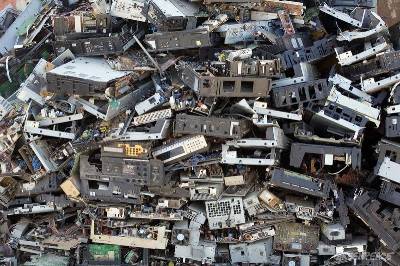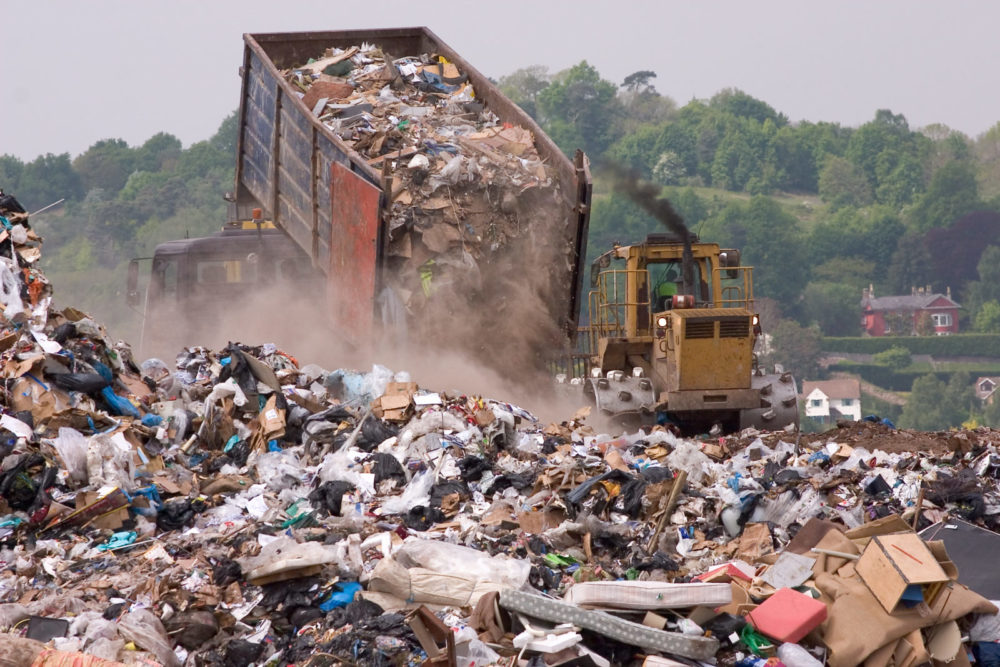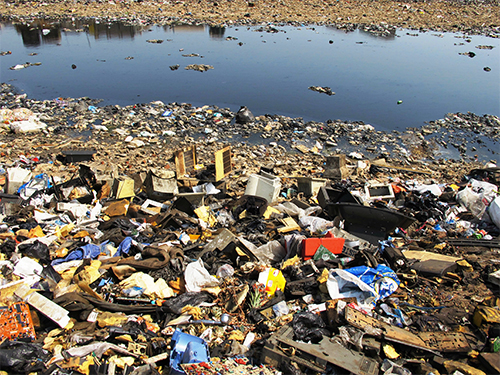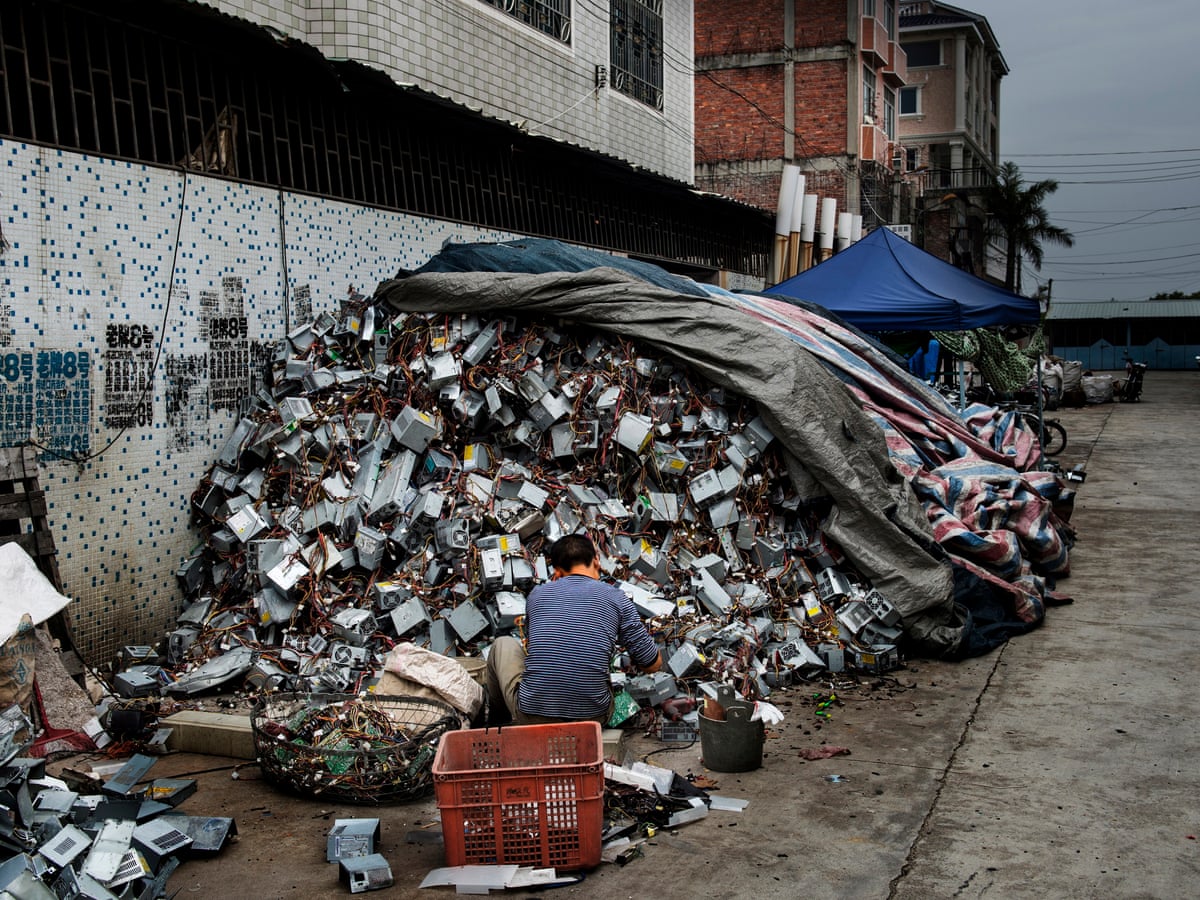How e-Waste is harmful to us?
How E-waste is harmful to us?
Electronic waste, also known as e-waste, refers to discarded electronic devices and equipment that have reached the end of their useful life or are no longer in working condition. E-waste includes a wide range of items such as computers, laptops, smartphones, tablets, televisions, printers, electronic appliances, batteries, and more.
What are the problems associated with E-waste?
E-waste, or electronic waste, poses several risks to the environment and human health. Here are some key risks associated with e-waste:
1. Environmental Pollution: Improper disposal of e-waste can lead to environmental pollution. Electronic devices often contain hazardous substances such as lead, mercury, cadmium, brominated flame retardants, and other toxic chemicals. When e-waste is dumped in landfills or incinerated, these substances can leach into the soil, contaminate water sources, and release harmful gases into the air, polluting the environment.
2. Soil and Water Contamination: The toxic substances present in e-waste can seep into the soil and contaminate it. This contamination can have long-lasting effects on ecosystems, potentially affecting plant growth, contaminating agricultural lands, and entering the food chain. When e-waste is improperly disposed of near water bodies or in landfills, it can also contaminate groundwater and surface water, posing risks to aquatic life and human consumption.
3. Air Pollution: Burning e-waste in open-air settings, such as informal recycling operations or incineration, can release toxic gases and particulate matter into the air. These pollutants contribute to air pollution, affecting air quality and potentially causing respiratory problems and other health issues for nearby communities.
4. Health Risks: Exposure to hazardous substances in e-waste can pose significant health risks. Workers involved in informal e-waste recycling operations, where unsafe practices are common, are particularly vulnerable. They may inhale toxic fumes or come into direct contact with harmful substances while handling or dismantling electronic devices. Long-term exposure can lead to respiratory disorders, skin ailments, neurological problems, reproductive issues, and even an increased risk of certain cancers.
5. Resource Depletion and Energy Consumption: Electronic devices contain valuable resources such as precious metals (gold, silver, copper), rare earth elements, and plastics. When e-waste is not properly managed, these resources go to waste. Extracting and processing these materials from raw sources contribute to resource depletion and energy consumption. By recycling e-waste, valuable materials can be recovered and reused, reducing the need for new resource extraction.
6. Electronic Waste Export: The export of e-waste to developing countries with less stringent regulations and inadequate recycling infrastructure is a significant concern. It can result in improper handling and disposal practices, exacerbating environmental and health risks in these regions.
7. Data Security and Privacy: Improper disposal of electronic devices can lead to data breaches and privacy violations. If personal or sensitive information is not securely erased from devices, it can be accessed and misused by unauthorized individuals. Protecting data during the disposal process is essential to mitigate these risks.
To mitigate these risks, it is crucial to adopt responsible e-waste management practices, including recycling, proper disposal, and supporting initiatives that promote sustainable production and consumption patterns. Implementing regulations, improving recycling infrastructure, and raising awareness about the hazards of e-waste are vital steps towards minimizing its impact on the environment and human health.
Has E-waste affected any country?
Several countries are affected by the improper handling and disposal of e-waste. Here are some countries that have experienced significant challenges related to e-waste:
1. China: For many years, China was a major destination for e-waste imports from around the world. However, due to environmental and health concerns, the country implemented stricter regulations in 2018, effectively banning the import of most types of e-waste. China has also been grappling with the environmental and health impacts of informal e-waste recycling operations.
2. India: India is one of the largest consumers of electronic devices, resulting in substantial e-waste generation. The country faces challenges in managing this waste stream effectively. Informal recycling operations in cities like Delhi and Mumbai pose environmental and health risks for workers and nearby communities.
3. Ghana: Ghana has been a significant destination for e-waste imports, particularly from Europe and North America. The Agbogbloshie area in Accra, Ghana's capital, has gained notoriety as one of the world's largest e-waste dumping sites. The informal recycling practices there have led to severe environmental pollution and health issues among the workers and nearby residents.
4. Nigeria: Nigeria has also faced challenges associated with e-waste, including illegal imports and the presence of informal recycling operations. The Agbogbloshie model of informal e-waste recycling has been replicated in several Nigerian cities, leading to environmental degradation and health risks.
5. Guiyu, China: Guiyu, a town in China's Guangdong province, gained global attention as a major e-waste recycling hub. The informal recycling operations there have caused significant environmental pollution and health problems among workers and residents.
6. Pakistan: Pakistan is another country significantly affected by e-waste. The improper disposal and recycling of e-waste have resulted in environmental contamination and health hazards for workers and communities.
It's important to note that e-waste is a global issue, and these examples highlight some of the countries that have faced substantial challenges. However, the responsible management of e-waste requires collective efforts from both producers and consumers worldwide.
How to manage e-waste?
1. Reduce Consumption: The first step is to reduce electronic waste generation by being mindful of your consumption. Only purchase electronic devices when necessary and opt for durable, high-quality products that have longer lifespans.
2. Donate or Sell: If your electronic devices are still functional and in good condition, consider donating or selling them. Many charitable organizations, schools, or individuals may benefit from your used electronics. Alternatively, you can sell them through online platforms or participate in community-based tech swaps.

4. Data Security: Before recycling or donating your electronic devices, ensure you take appropriate measures to protect your personal data. Back up and transfer important files, and then wipe the devices to remove all personal information. Consult the device's user manual or manufacturer's website for instructions on how to perform a factory reset or data wipe.
5. Responsible Disposal: If you cannot recycle or donate your electronic devices, check with your local waste management authorities to find out about proper disposal methods. Improper disposal of e-waste, such as throwing it in regular trash bins or incinerating it, can be harmful to the environment and human health.
6. Support E-Waste Legislation: Stay informed about e-waste regulations and support initiatives that promote responsible e-waste management. Encourage policymakers to implement and enforce policies that require manufacturers to take responsibility for the entire lifecycle of their products, including proper disposal and recycling.
Remember, managing e-waste is a collective responsibility. By adopting these practices, you can contribute to a cleaner environment and the sustainable use of electronic devices.









Nice presentation ✨️👍🏼
ReplyDelete